Don't have a project ID?
Head over to Reown Dashboard and create a new project.
Domain to use
It is important to understand what domain you are using for your project as you are required to host a static file (thedid.json file) on this domain before being able to use Notify API. The Reown Dashboard and clients receiving and managing your notifications use this file to authenticate that your domain is associated with the source of the notifications.
You can pick 1 domain and this is configured in the Dapp URL field of the Notify API section of the Reown Dashboard. You may change your domain at any time, as long as you properly host the new did.json file there. Note that only one project may use a given domain at the same time.
During development it is optional to use your production domain for testing. Instead, you can use a staging domain, or even a entirely separate domain e.g. Vercel test site. However, once you move to production you will need to update your domain to your production domain and host a new file there.
Note that the file must be hosted on a real, publicly accessible, domain in order to verify its legitimacy. The use of localhost or other local addresses is not allowed.
Dapp name, description, and logo
The dapp name, description, and logo are displayed in wallets that integrate Notify API as well as in the Web3Inbox.com app. These details should be provided for the best user experience and to help the user identify your app.Notification types
Notification types are an important feature of Notify API and are a way for a user to have control over what types of notifications they receive. Users can change their notification types at any time in your app, their wallet, or the Web3Inbox.com app. When sending notifications, you must use one of these configured notification types which you reference in code by its UUID. Notification types are configured with a name, description, and icon which allow the user understand what types of notifications they would receive for that type. When a user receives a push notification on their device, they will see the icon that is configured with the notification type. Examples of notification types may include “Account updates” or “Service updates”.By default users are subscribed to all available notification types. However,
it’s worth nothing that if you add new notification types later users will not
be automatically subscribed to them. If you have new notification types
available, you may consider sending a notification informing users of this new
available notification type and ask users to enable it. You may also add
functionality to your app frontend to subscribe the user to the new
notification type when they visit your app. Because of the additional effort
in subscribing users to notification types after they initially subscribe, it
is worth considering in advance what notification types you may need in the
future.
Setup steps
Navigating to Notify API section
In Reown Dashboard, navigate to the APIs tab of your project.
Configuring Notify API
Under Notify API > Configuration >DAPP INFORMATION, fill in the Dapp URL field. This is the domain of your app that you will use to publish notifications.
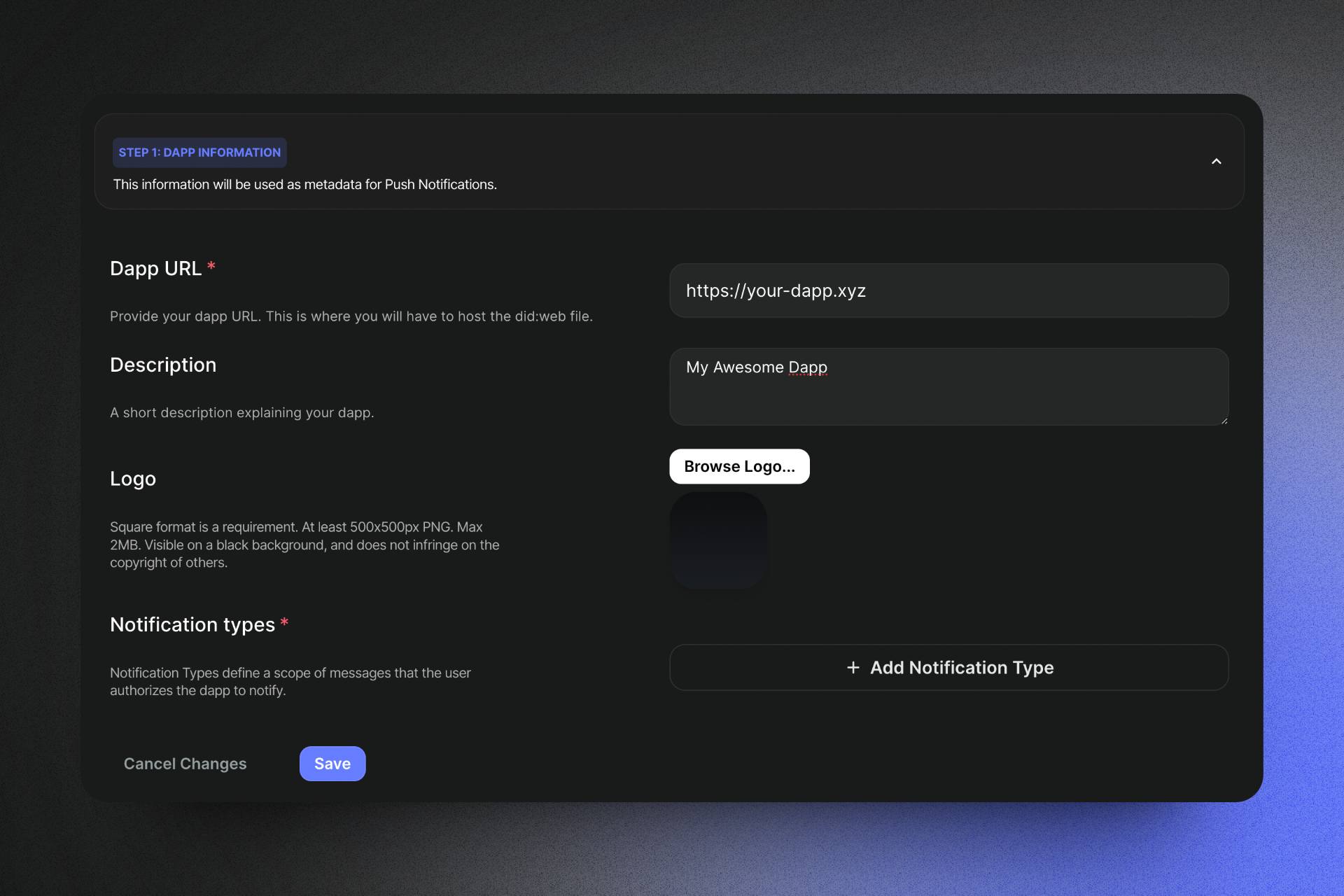
Adding Notification Image and Types
Under the same section, next to Notification types, click on the “Add Notification Type” button and add a title, notification image and description for your notification type. This is the type of notification that your app will publish. For example, if you are going to send promotional content as notification, you might want to add a notification type called “Promotional” with a description “Promotional content from the XYZ Team.”. You can also add a relevant image for the notification type.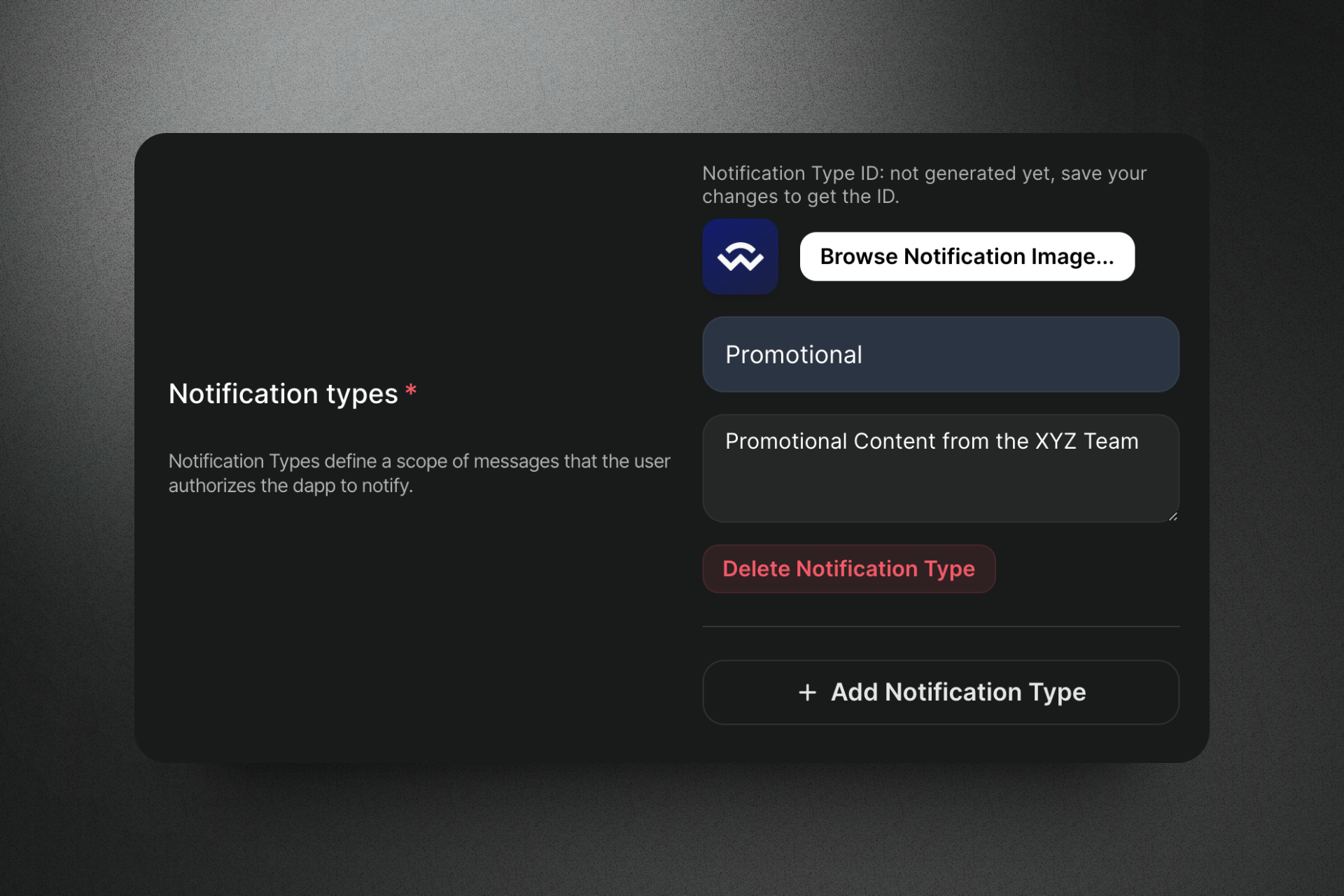
Saving Changes
Optionally, you can add a logo and description for your project. This will be shown to users when they subscribe to your app. Click “Save” to save your changes.Notify Secret
Take note of your new Notify API Secret. You will need this to publish notifications. This secret allows publishing notifications to any account subscribed to your app, so should not be published and should only be used by your app backend.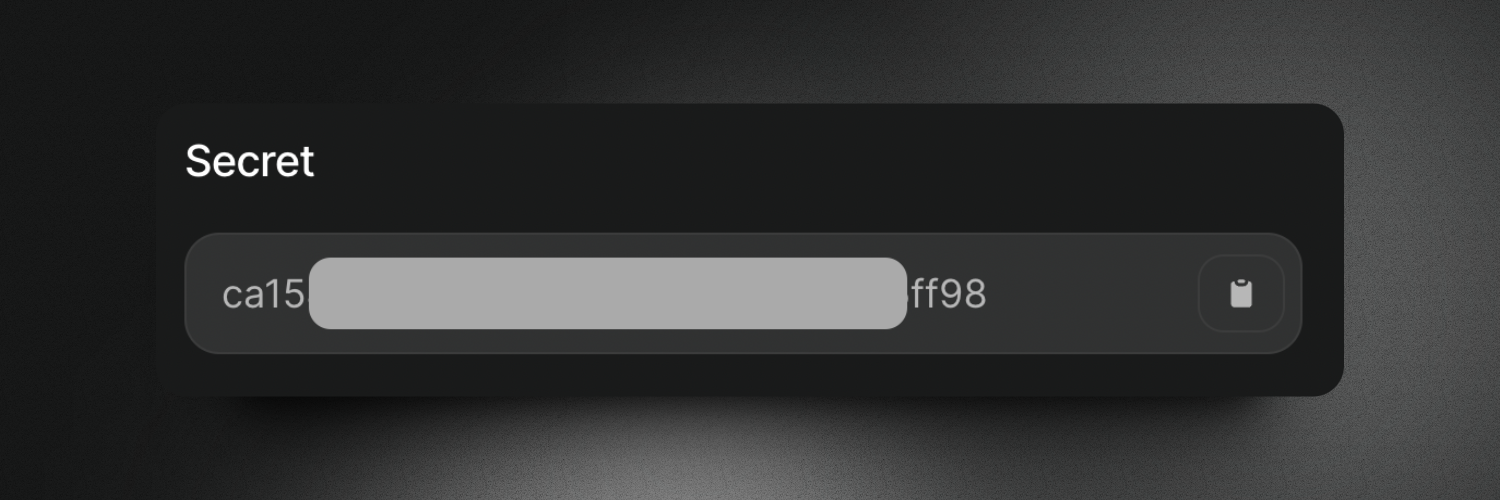
Hosting did.json file
Next, you will need to hostdid.json file on this page at the /.well-known/ directory of your public URL. Please also ensure that your application has CORS enabled. An example is linked here.
- Download
did.json(click onDID:WEBsection to show the download button ) and host it at, for example,https://app.example.com/.well-known/did.json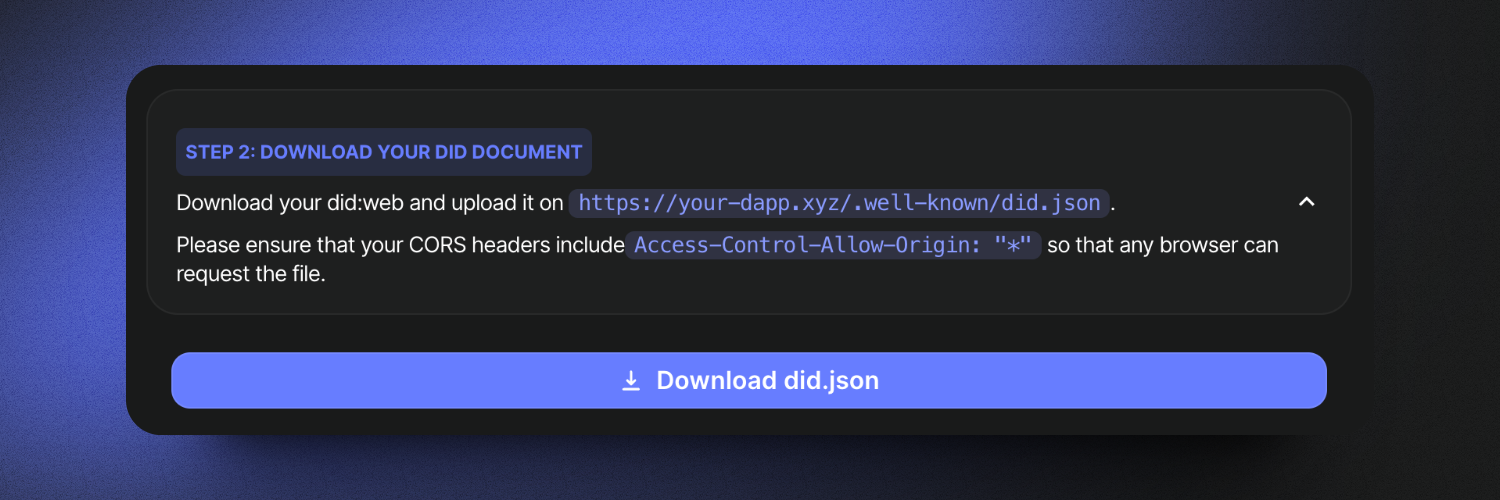
Enabling Welcome Notifications
Welcome Notifications are notifications that are sent to users when they subscribe to your app. This is a great way to welcome users to your app and explain what types of notifications they will receive. To enable Welcome Notifications, switch on the toggle in the Welcome Notifications section of your Reown Dashboard project after adding relevant Notification Type, Title, Body & Link.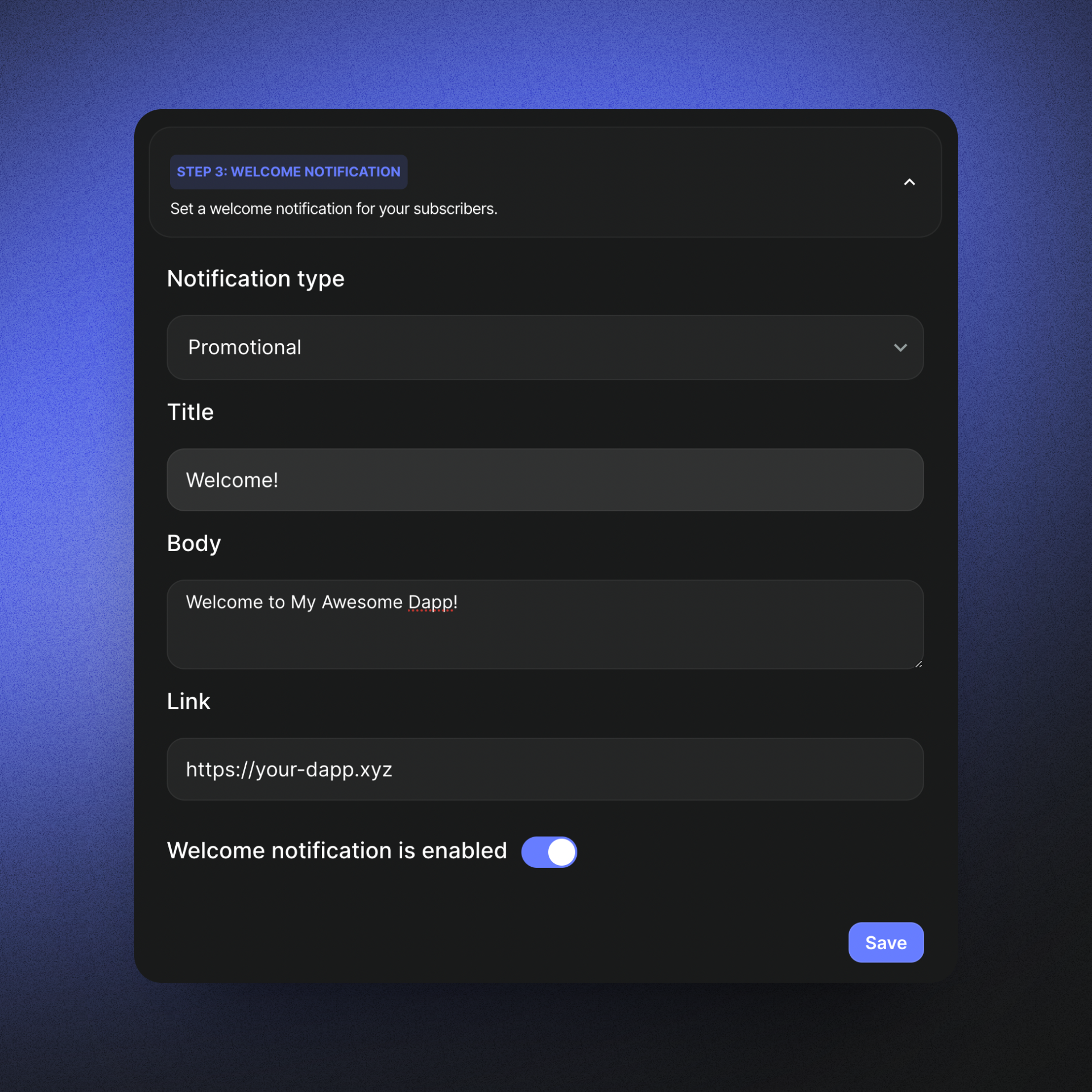
Enabling Notify API
Once all changes have been saved and thedid.json file has been deployed successfully, switch on the toggle switch in the Notify API section of your Reown Dashboard project. If everything is configured correctly, you should see a success toast: “Notify configuration successfully verified”
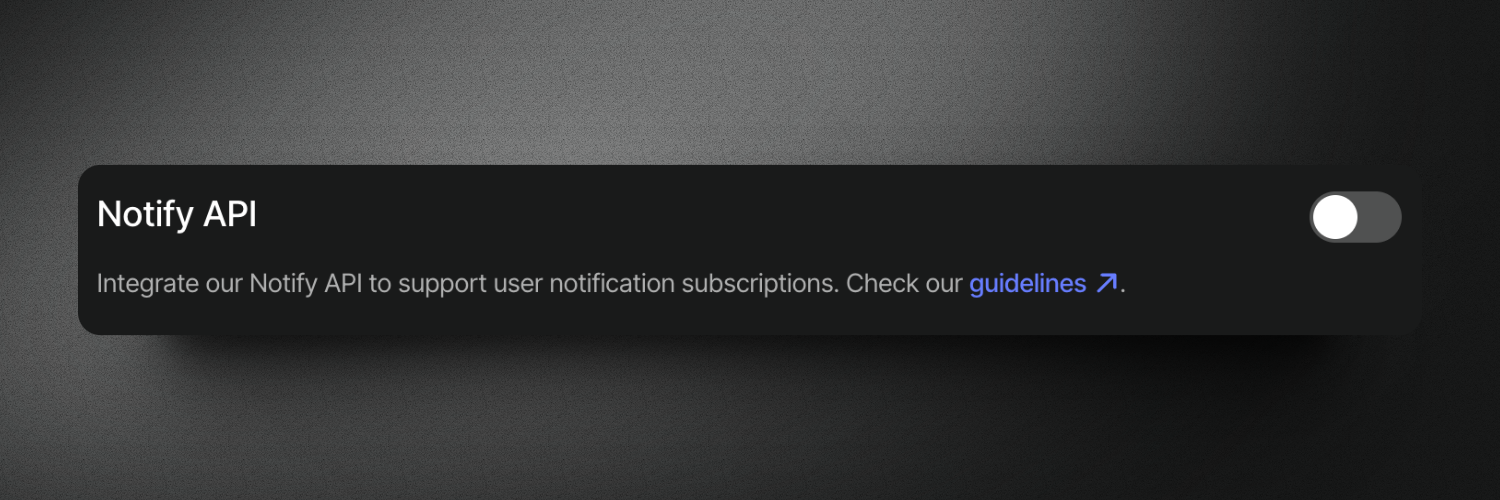

Send Notifications in Cloud
Once you have completed the setup steps, you can now send notifications to users who have subscribed to your app. Read moreNext steps
-
Now you are ready for accounts to subscribe to your app and send notifications to them using your Notify API Secret or with Reown Dashboard.
- Read more on sending notifications with Reown Dashboard
- Read more on frontend integration
- Read more on backend integration
-
Navigate to the
Metricstab and select Web3Inbox from the dropdown to access analytics for your app. Learn more about Web3Inbox Analytics.
